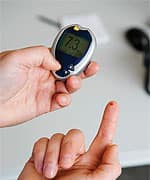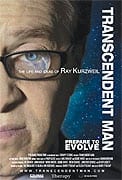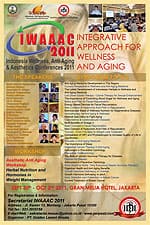Life Extension Magazine®
 | |
Creatine May Reduce Side Effects of Statin Drugs | |
| The nutrient most associated with an ability to help reduce the side effects of statin drugs is coenzyme Q10 (CoQ10). Numerous studies support the use of CoQ10 in combination with prescription statin drugs. However, creatine appears to be another nutrient that may be of considerable benefit to those taking statin drugs experiencing any of the classic side effects of statin drugs, such as myalgia, weakness, and lethargy. A recent study performed at the Johns Hopkins School of Public Health found creatine highly effective for reducing the side effects of the statin drugs.* In fact, the researchers theorize one of the effects of the statin drugs may be a decrease in intracellular creatine in muscle, similar to the toxic effects of glucocorticoids and cyclosporine. This study looked at 12 patients identified as intolerant of several different statin drugs. Amazingly, the study found that creatine loading followed by maintenance creatine therapy totally prevented myopathy symptoms in eight out of 10 patients receiving statins. More telling of the profound effect of the creatine: all patients went on to develop myopathy symptoms while receiving statins alone, which went away after creatine was reintroduced. Creatine supplementation plus CoQ10 may be the most effective combination yet found for treating or preventing statin drug side effects. —Will Brink | |
| Reference | |
| * Ann Intern Med. 2010 Nov 16;153(10):690-2. | |
Soluble Fiber Helps Bust Belly Fat | |
In a recent article published in Obesity, researchers from Wake Forest Baptist Medical Center report an association between increased intake of soluble fiber and a reduction in visceral or belly fat that surrounds the body’s organs and is considered the most dangerous type of adipose tissue.* “We know that a higher rate of visceral fat is associated with high blood pressure, diabetes, and fatty liver disease,” explained lead researcher Kristen Hairston, MD. Dr. Hairston and her colleagues evaluated data from 1,114 participants in the Insulin Resistance and Atherosclerosis Family Study. Physical examinations were conducted, and visceral and subcutaneous fat was measured via computed tomography upon enrollment and after five years. Dietary intake over the previous year was reported during the five-year follow-up visit. Although consuming more soluble fiber was not associated with the accumulation of less subcutaneous fat, an association with decreased visceral fat accumulation over time was observed. Editor’s note: Dr. Hairston plans to conduct a clinical trial later this year to test whether consuming a soluble fiber supplement elicits a similar benefit as that suggested by the current research. Examples of soluble fiber sources are propolmannan, oat bran, flaxseed, beans, and apples. —D. Dye | |
| Reference | |
| * Obesity. 2011 Jun 16. | |
Review Finds Improved Survival in Trials of Vitamin D3 Supplementation | |
A lengthy review published in The Cochrane Library reveals that supplementing older individuals with vitamin D3 is associated with reduced mortality over a two-year period.* Goran Bjelakovic of the University of Nis in Serbia and his European associates selected 50 randomized trials involving vitamin D supplementation, which provided a total of 94,148 participants for their analysis. The median length of supplementation with vitamin D was two years. Dr. Bjelakovic and his colleagues uncovered a significant benefit for supplementation with vitamin D3, but not for other forms of the vitamin, on improving survival over the course of the trials. “Our analyses suggest that vitamin D3 reduces mortality by about 6%,” he concluded. “This means that you need to give about 200 people vitamin D3 for around two years to save one additional life.” Editor’s note: Because there were fewer trials involving other forms of vitamin D included in the current analysis, the apparent absence of a survival benefit for these forms needs to be taken with caution. The dose of vitamin D3 used in these trials was far less than the 5,000 IU to 10,000 IU most Life Extension members use today. —D. Dye | |
| Reference | |
| * Cochrane Database Syst Rev. 2011 Jul 6;(7):CD007470. | |
Flavonoid Prevents Diabetic Complications | |
Recently, the journal PLoS ONE reported the discovery by Salk Institute for Biological Studies researchers of a benefit for fisetin in the prevention of several complications that can result from diabetes.* Fisetin is a flavone found in abundance in strawberries, and smaller quantities in other fruit and vegetables. Salk Institute Cellular Neurobiology Laboratory head David Schubert, PhD, and his associates evaluated the effects of fisetin in healthy control mice and Akita mice bred to develop type 1 diabetes. The latter developed kidney disease, retinopathy, and neuropathies typical of human type 1 diabetics. Although the diabetes in animals that received fisetin remained, kidney enlargement and urinary protein decreased compared to diabetic mice that did not receive the compound. Anxiety-related symptoms, which are a central nervous system complication that occurs in many human diabetics, were also reduced in animals that were given fisetin. Editor’s note: Dr. Schubert remarked, “We will never know if a compound like fisetin works in humans until someone is willing to support a clinical trial.” —D. Dye | |
| Reference | |
| * PLoS ONE. 2011;6(6):e21226. | |
Studies Show How Tocotrienols Reduce Stroke Damage | |
| Reports published online in the Journal of Cerebral Blood Flow & Metabolism1 and in the journal Stroke2 reveal the findings Chandan K. Sen and his associates discovered of protective effects for tocotrienols against the damage incurred by stroke. In the first article, Dr. Sen and colleagues reported the effect of tocotrienols in a canine model of stroke. Animals that received tocotrienols experienced less overall brain damage, decreased loss of neural connections and better blood flow to the affected area (from collateral vessels) compared with those that did not receive the compounds.1 In the Stroke article, Dr. Sen and coauthors describe experiments with alpha-tocotrienol that uncovered one of three mechanisms by which the compound helps prevent the death of brain cells following stroke. The current research demonstrated that tocotrienol activates genes that produce multidrug resistance-associated protein 1 (MRP1), a protein that clears away intracellular oxidized glutathione, which accumulates during stroke and triggers brain cell death.2 Editor’s note: Alpha-, beta-, gamma-, and delta-tocotrienols are four of the eight forms in which vitamin E occurs and, while not abundant in Western diets, are available in supplemental form. —D. Dye | |
| Reference | |
| 1. J Cereb Blood Flow Metab. 2011 Jun 15. | |
Vitamin D Insufficiency Associated with Football Injuries | |
The American Orthopaedic Society for Sports Medicine’s Annual Meeting held in San Diego was the site of a presentation by Michael Shindle, MD, and his colleagues showing a higher incidence of vitamin D insufficiency among National Football League players with muscle injuries.* The current study included 89 NFL players aged 21 to 32 years. Vitamin D deficiency was identified in 27 participants, and insufficient levels were observed in 45 subjects. Caucasian players had an average level of 30.3 nanograms per milliliter, while African Americans averaged 20.4 nanograms per milliliter. Among those with muscle injury, vitamin D levels averaged 19.9 nanograms per milliliter, which is considered deficient. Co-author Joseph Lane, MD, of the Hospital for Special Surgery concluded that, “Further research also needs to be conducted in order to determine if increasing vitamin D leads to improved maximum muscle function.” Editor’s note: Scott A. Rodeo, MD, who is co-chief of the Sports Medicine and Shoulder Service at the Hospital for Special Surgery, added that, “Screening and treatment of vitamin D insufficiency in professional athletes may be a simple way to help prevent injuries.” —D. Dye | |
| Reference | |
| * American Orthopaedic Society for Sports Medicine’s Annual Meeting. July 7-10, 2011. San Diego, California. | |
Omega-3 Supplementation Soothes Anxiety, Inflammation | |
In an article published in Brain, Behavior and Immunity, researchers at Ohio State University College of Medicine report that supplemental omega-3 fatty acids from fish oil lower anxiety as well as the stress-associated increase in pro-inflammatory molecules known as cytokines in healthy young adults without anxiety disorders.* Janice Kiecolt-Glaser and her colleagues divided 68 first- and second-year medical students, who experience significant levels of stress, to receive omega-3 fatty acids or a placebo. Those who received omega-3s had a 20% reduction in anxiety compared to those who received the placebo, as well as lower amounts of pro-inflammatory cytokines. “We saw a 14% reduction in the amounts of interleukin-6 among the students receiving the omega-3,” stated Ohio State professor of molecular virology, immunology, and medical genetics Ron Glaser, PhD. “Anything we can do to reduce cytokines is a big plus in dealing with the overall health of people at risk for many diseases,” he added. Editor’s note: The supplement used in the study provided about four or five times the amount of fish oil contained in a daily serving of salmon. —J. Finkel | |
| Reference | |
| * Brain Behav Immun. 2011 Jul 19. | |
Higher Vitamin D Levels Improve Osteoporosis Drug Response | |
| The Endocrine Society’s 93rd Annual Meeting was the site of a presentation of the finding of Richard Bockman, PhD, and his associates of a better response to treatment with bisphosphonate drugs among women whose vitamin D levels were higher than the range of 20 to 30 nanograms per milliliter considered adequate by the Institute of Medicine.* The current study included 160 women with osteoporosis who had been using bisphosphonates for 18 months or more and who had received at least two bone mineral density scans separated by up to 5 years. Eighty-nine of the participants were classified as responders to bisphosphonates, and 71 were nonresponders. Bisphosphonate responders were seven times likelier than nonresponders to have a 25-hydroxyvitamin D level of 33 nanograms per milliliter or higher. “If you want to see a particular outcome from this treatment, then maybe 20 to 30 is not appropriate,” Dr. Bockman stated. Editor’s note: “This value of at least 33 nanograms/milliliter is higher than the level considered as ‘adequate’ by the Institute of Medicine report for the general population and most likely requires a vitamin D intake higher than 600 IU for this therapeutic outcome,” Dr. Bockman stated. —D. Dye | |
| Reference | |
| * The Endocrine Society 93rd Annual Meeting. June 4-7, 2011. Boston, Massachusetts. | |
Broccoli Compound Goes After Cancer Cells | |
| A study reported in Molecular Nutrition & Food Research shows that sulforaphane, a compound that occurs in cruciferous vegetables including broccoli, targets cancer cells by inhibiting a family of enzymes known as histone deacetylases while leaving healthy cells alone.* Histone deacetylase inhibitors help turn on tumor suppressor genes that are silenced in cancer cells, restoring normal function. Emily Ho and her colleagues studied the effects of sulforaphane in normal, benign hyperplastic and prostate cancer epithelial cells. They found that the compound induced cell cycle arrest and programmed cell death in prostate hyperplasia and cancer cells, while not affecting normal cells. “It is well documented that sulforaphane can target cancer cells through multiple chemopreventive mechanisms,” the authors write. “Here we show for the first time that sulforaphane selectively targets benign hyperplasia cells and cancerous prostate cells while leaving the normal prostate cells unaffected,” they announce. Editor’s note: Oregon State University researchers had previously found that giving mice a high-sulforaphane diet retarded prostate tumor growth. —D. Dye | |
| Reference | |
| * Mol Nutr Food Res. 2011 Jul;55(7):999-1009. | |
Movie Premiere: Transcendent Man with Ray Kurzweil | |
Transcendent Man chronicles the life and ideas of Ray Kurzweil, an inventor and futurist who presents his bold vision of the Singularity, a point in the near future when technology will be changing so rapidly that we will have to enhance ourselves with artificial intelligence to keep up. Ray predicts this will be the dawning of a new civilization in which we will no longer be dependent on our physical bodies, we will be trillions of times more intelligent, and there will be no clear distinction between human and machine, real reality and virtual reality. Ray predicts that human aging and illness will be reversed, world hunger and poverty will be solved, and we will ultimately cure death. Critics accuse Ray of being too optimistic and argue that the dangers of the Singularity far outweigh the benefits, pointing out the apocalyptic implications that once machines achieve consciousness, we may not be able to control them. Whether Ray’s controversial ideas incite excitement or fear, dogma or disbelief, this ambitious documentary will forever change the way you look at life, death, and your own future. For more information, visit: http://transcendentman.com —Felicia Ptolemy and Celia Black | |
Anti-aging Practice in Indonesia | |
Perpasti (Indonesian Society of Anti-Aging Physicians) is the first and biggest medical society of anti-aging practitioners in Indonesia. It was officially announced on September 3, 2006, in Jakarta by the Minister of Health of the Republic of Indonesia. Although it is a young organization, the founders were very keen to absorb the knowledge and practice anti-aging medicine for themselves and their patients. Furthermore, a series of seminars, symposia, and workshops were held in Jakarta and other cities in Indonesia (which is home to more than 220 million people). Almost 700 doctors attended these seminars, including specialists of all kinds and general practitioners. This speaks to the broader appeal of the organization, which among its founders comprises dermatologists, lung specialists, pharmacologists, pathologists, naturopathic and homeopathic doctors, estheticians, advanced hormone therapists, epidemiologists, and physical exercise specialists. Topics that were brought forward included obesity, stress reduction, esthetics/cosmetics, growth hormone, integrative cancer therapy, improving quality of life, and growing older without aging. The desire to disseminate the science and skill of teaching wellness and anti-aging medicine has prompted chapters of PERPASTI to open up in cities throughout Indonesia. The upcoming Congress in September-October 2011 will bring forward the latest developments in this medical specialty. For registration information, call 021-3915158. |








